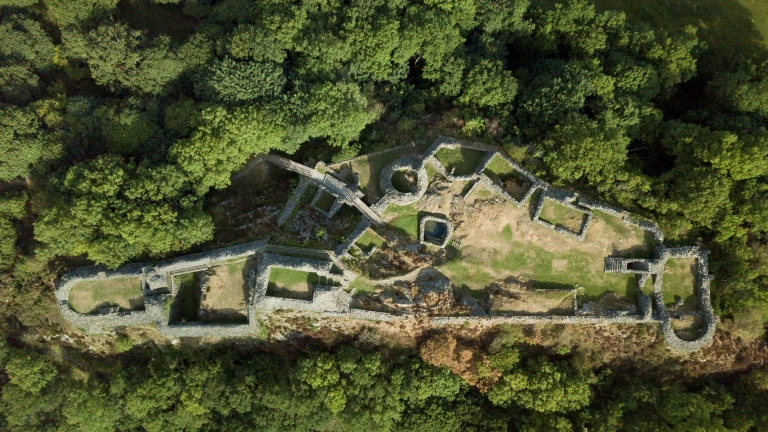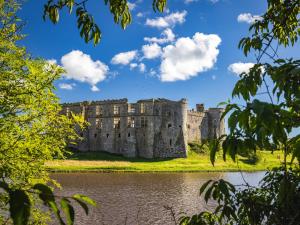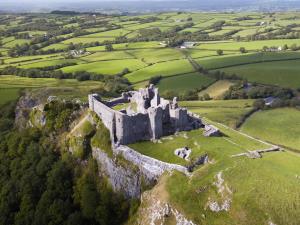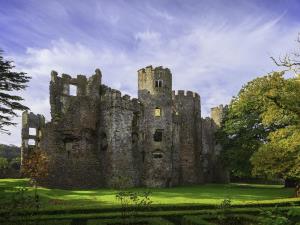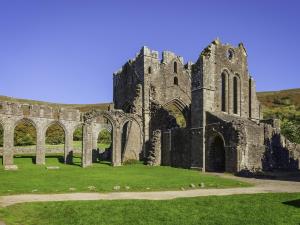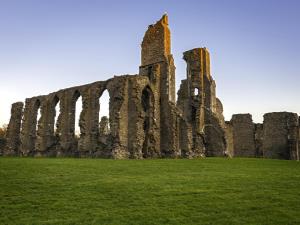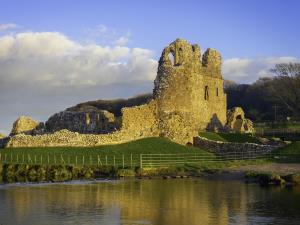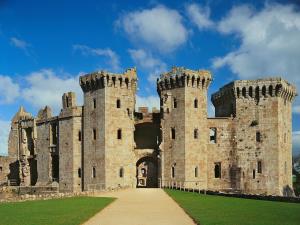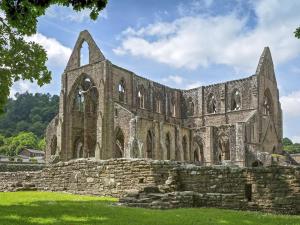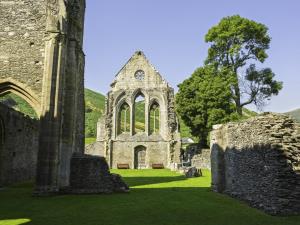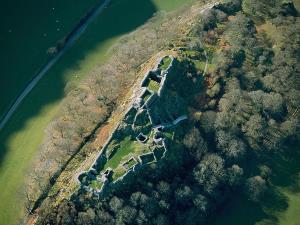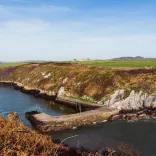Carew Castle, Pembrokeshire
In a beautiful waterside location, the imposing Carew Castle has a powerful presence. Founded around 1100 and built from local limestone, it was abandoned in the 1680s and is now used as a roost by rare greater horseshoe bats. The village of Carew has a beautiful Celtic stone cross, Croes Caeriw, and the only restored tidal mill in Wales.

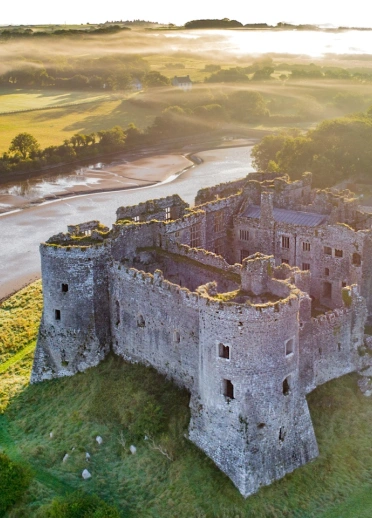
Castell Carreg Cennen (Carreg Cennen Castle), Carmarthenshire
There’s something truly poetic about the silhouette of the hilltop ruin of Castell Carreg Cennen (Carreg Cennen Castle), surrounded by Carmarthenshire farmland. In the 1790s, JMW Turner drew and painted it several times in sketchbooks which are now held at Tate Britain. As a medieval defence, it was brilliantly sited, on top of a steep cliff with 360-degree views.
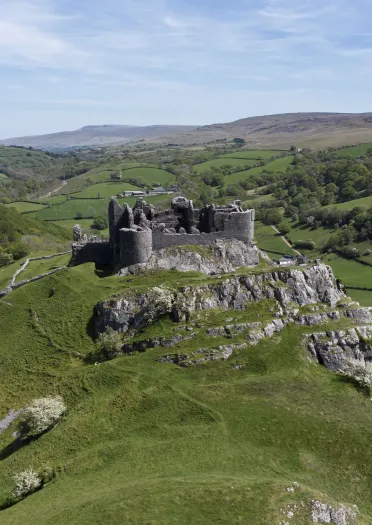
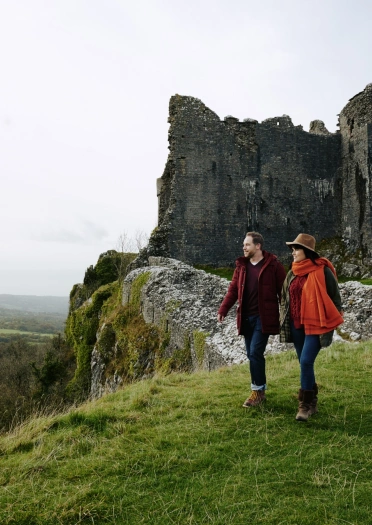
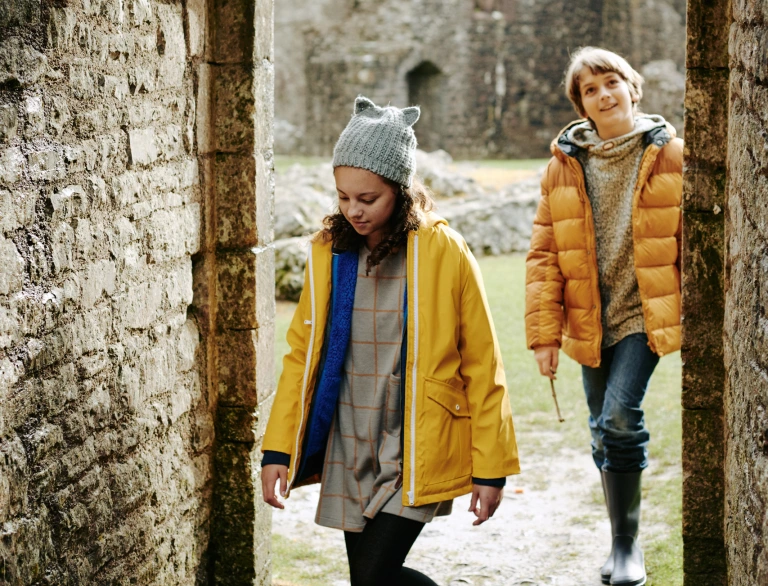
Castell Talacharn (Laugharne Castle), Carmarthenshire
The restless spirit of Dylan Thomas lives on in the village where the ruins of the medieval Castell Talacharn (Laugharne Castle) stand close to the shining estuary of the River Tâf. To him, its moody stones were 'brown as owls'. They’re now the walls of a garden. A short stroll from here is the Boathouse, which was the great poet’s home.
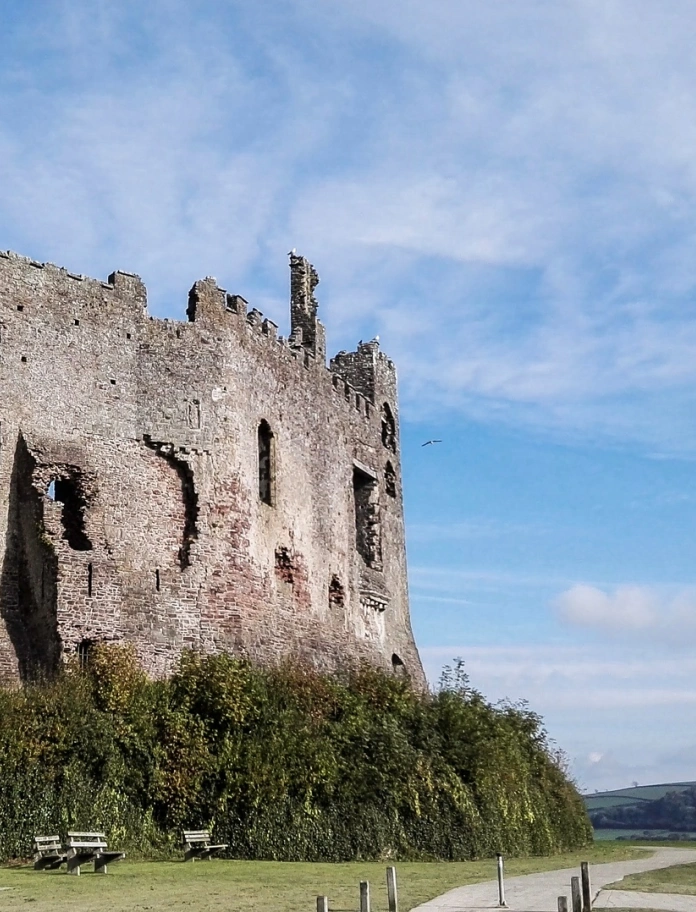
Priordy Llanddewi Nant Hodni (Llanthony Priory), Monmouthshire
Rounded hills dusted with woodlands, bracken and grass make the perfect backdrop to the time-worn stones of the 12th century Augustinian Priordy Llanddewi Nant Hodni (Llanthony Priory). JMW Turner sketched it in graphite and watercolour during his tour of Wales in 1794. Close to the English border in the Black Mountains, this is a fabulous area for walking and horse riding.
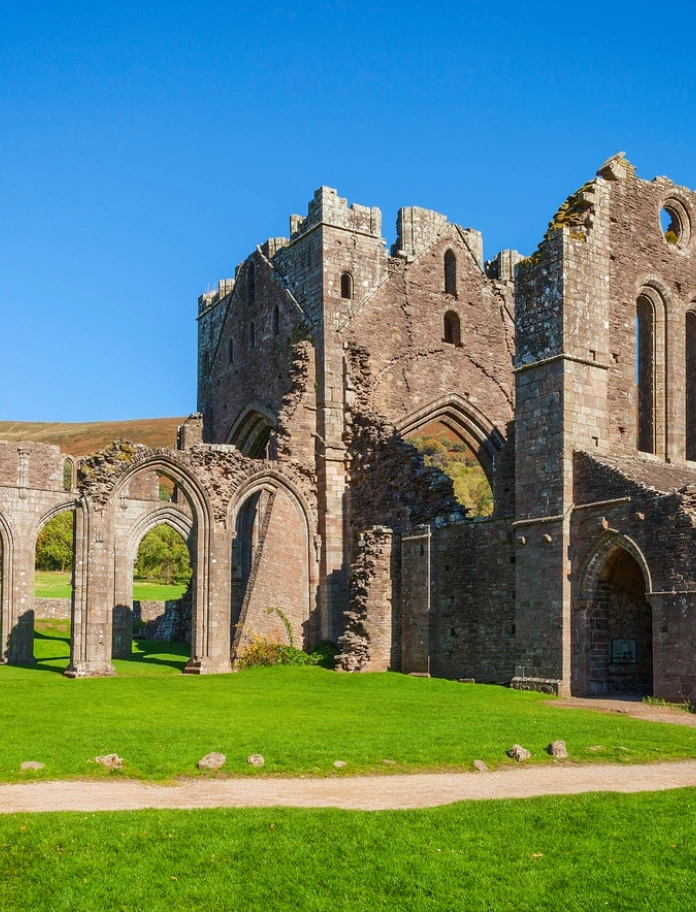
Abaty Nedd (Neath Abbey), West Wales
Abaty Nedd (Neath Abbey) was founded by Cistercian monks in 1130 and grew to become one of the largest monasteries in Wales. Parts of it were used long after the dissolution of the monasteries in the reign of Henry VIII, which spelt doom for grand ecclesiastical buildings all over Wales. But by the late 1700s, only roofless walls remained.
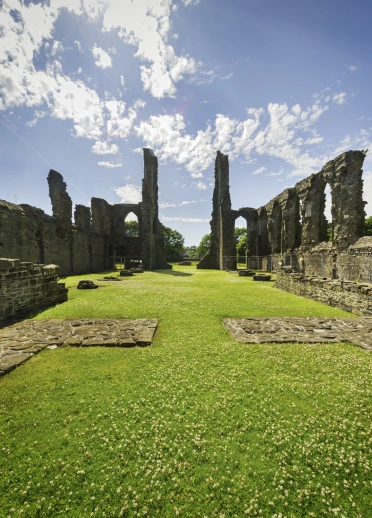
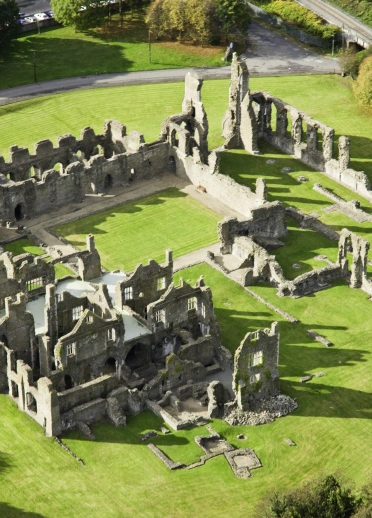
Castell Ogwr (Ogmore Castle), Vale of Glamorgan
An irresistible chain of well-worn stepping stones leads you from the village of Ogmore across the shallow River Ewenny to the remains of the 12th century Castell Ogwr (Ogmore Castle). As the veteran travel writer Jan Morris noted, you have to feel for the Norman soldiers stationed here, who must often have slipped (or been pushed) into the river after an evening out.
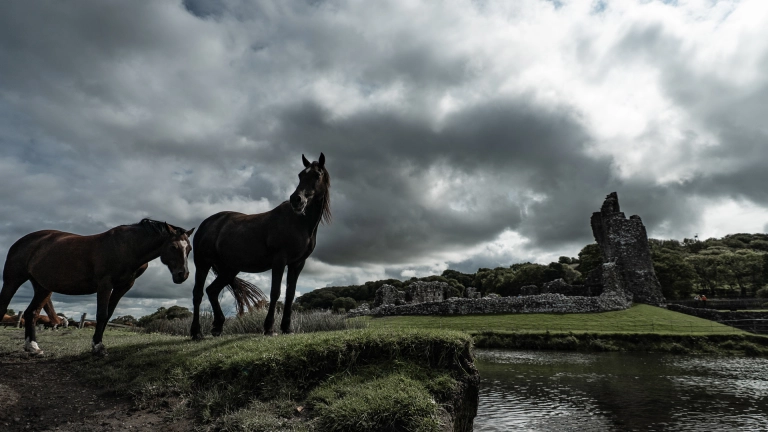
Oystermouth Castle, Swansea
Oystermouth Castle, a rather pretty little Norman castle floats above the seaside town of Mumbles, with wonderful views out to sea. It once contained an impressive banqueting hall and staterooms. A glass walkway allows you to explore. In spring and summer, locals picnic in its grassy parkland, the setting for medieval fun days and other events.
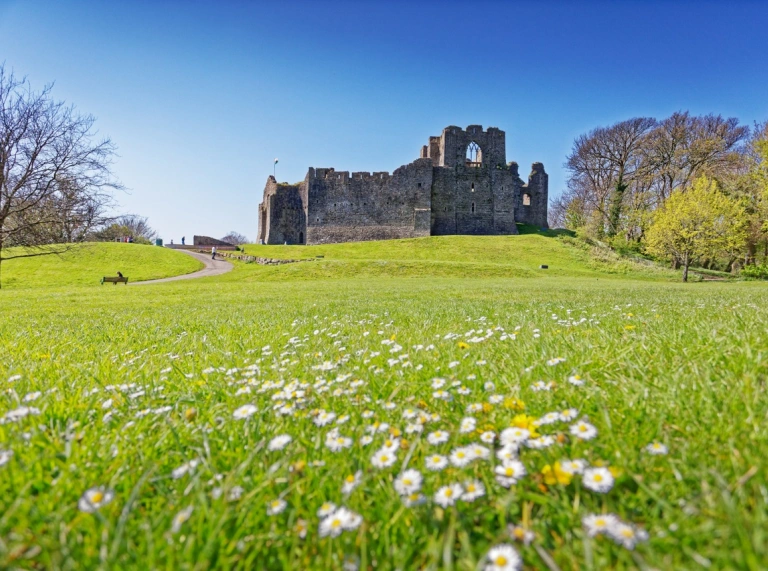
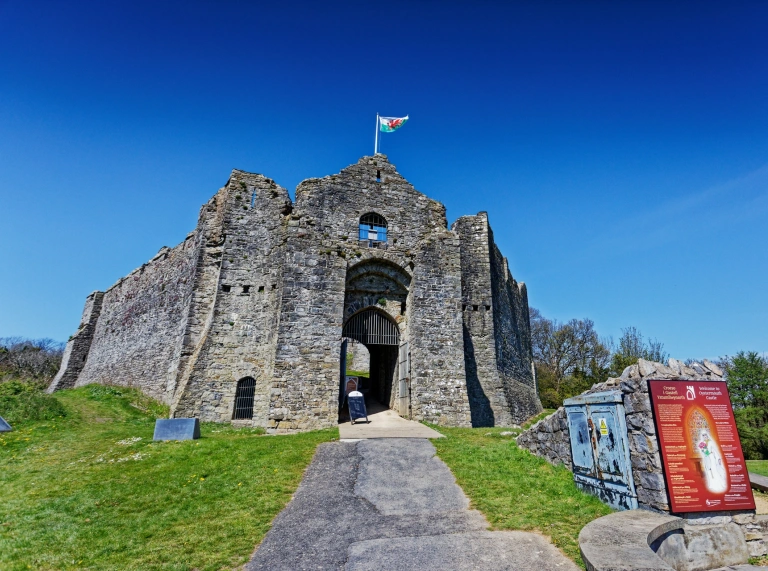
Raglan Castle, Monmouthshire
Raglan Castle was built in the 1430s for William Herbert, the first Earl of Pembroke, as a grand home rather than a military defence. Herbert insisted it had fashionable domestic features such as huge windows and carved timber panels. Nonetheless, from the outside, it does a good impression of an impregnable medieval fortress.
Climb the Great Tower on its moated island and explore the newly-restored undercroft beneath the castle, which used to house some of the finest wines in Europe and were served at the high table to impress guests.
In keeping with Raglan's reputation for entertainment, the castle regularly plays host to events including poetry, plays, singing and dancing.

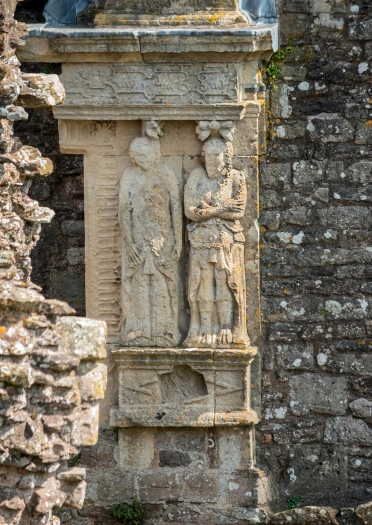
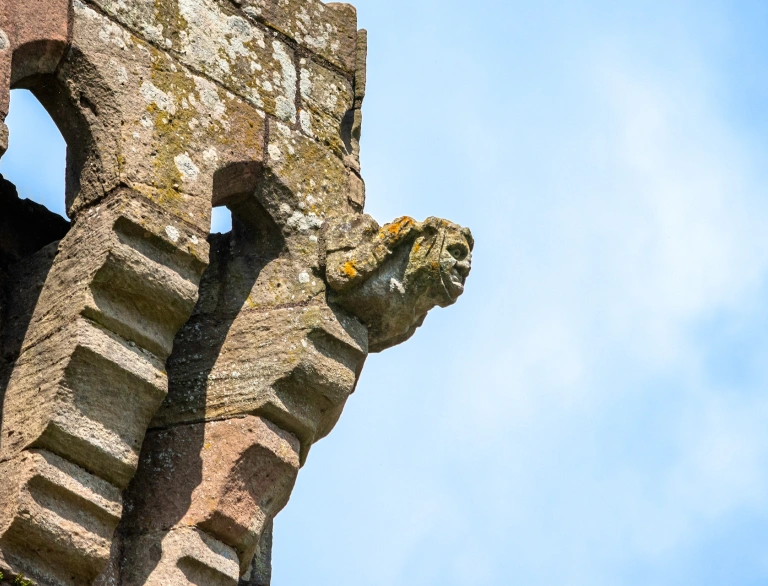
Abaty Tyndyrn (Tintern Abbey), Wye Valley
Captured by JMW Turner, William Wordsworth and countless other artists, writers and poets, Abaty Tyndyrn (Tintern Abbey) is the most famous of Wales’ beautiful medieval ruins. Its setting in the steep-sided Wye Valley is simply ravishing, and its soaring Gothic arches are close enough to the road, river and footpaths to be viewed from many different angles.
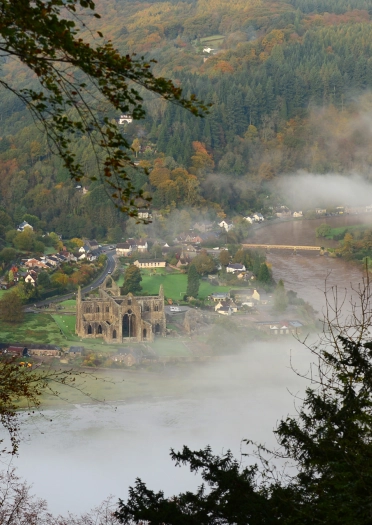
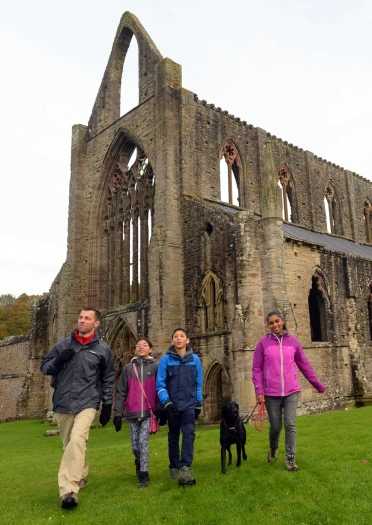
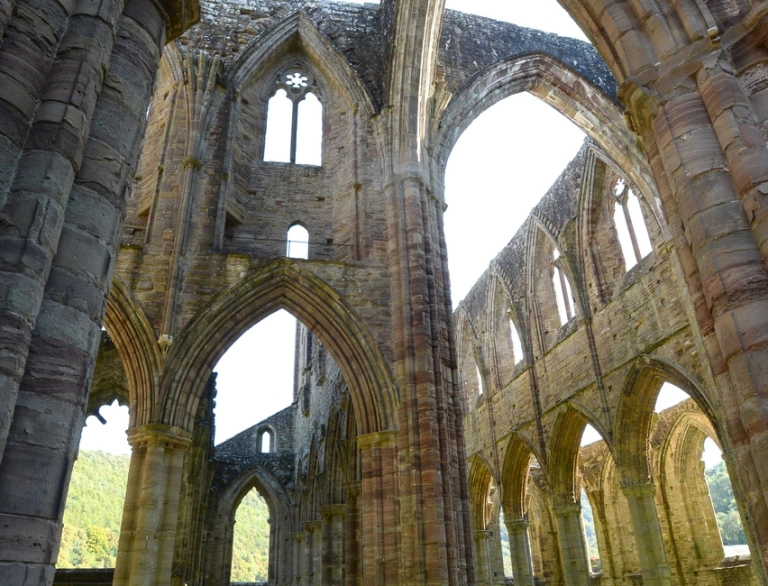
Abaty Glyn y Groes (Valle Crucis Abbey), Llangollen
Founded three decades earlier than Tintern in 1101, Abaty Glyn y Groes (Valle Crucis), a Cistercian abbey near Llangollen was relatively modest, but there’s still grandeur in its Gothic arches and beauty in its lush, pastoral setting. When JMW Turner painted it, he shifted the perspective to include the hilltop fort of Dinas Brân in the same frame. Follow the Llangollen History Trail to find more about the fascinating history in the area.
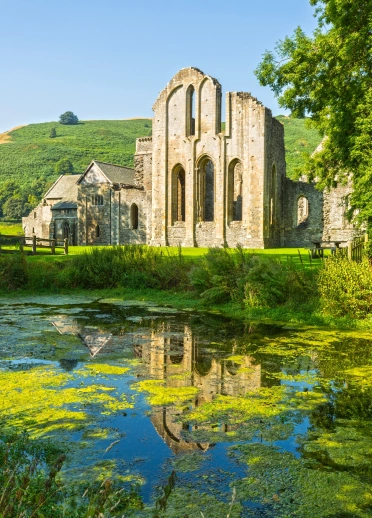

Castell y Bere, Eryri (Snowdonia)
One of the ultimate romantic Welsh ruins must be Castell y Bere. Deep in a remote valley in the hills of southern Eryri, the castle remains are lonely and quiet. This native Welsh castle was probably built by Prince Llywelyn ab Iorwerth ('the Great') around 1220 to guard his cattle and trading routes. Edward I captured it in 1283, destroying and abandoning the castle by 1294. The views are stunning - taking in the pastures of the Dysynni Valley down towards the coast at Tywyn in one direction, and Cader Idris looming above in the other.
